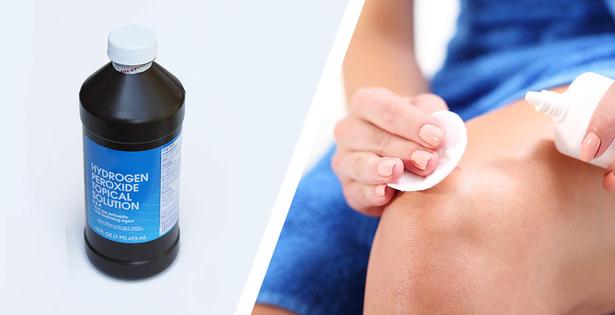22 Healthy Uses for Hydrogen Peroxide (and a Few You Should Avoid)
In your kitchen
To eliminate mold and mildew in your dishwasher, spray the intricate parts of your dishwasher where moisture can linger long after a cycle is complete — in the pleats of rubber seals, traps, and crevices of the utensil basket.
A 2016 study of residential dishwashers found that 83 percent of the dishwashers they tested were positive for fungi, and 47 percent of dishwashers tested contained the black yeast E. dermatitidis, which can be harmful to humans. E. dermatitidis was detected primarily at the dishwasher rubber seals.
Or if you feel like giving this hardworking appliance a spa day, use hydrogen peroxide, baking soda, and essential oils to make a scented dishwasher “bomb.”

Many home care blogs recommend this trick to clean your kitchen sink: Wet the surface of your sink, then scrub it with baking soda sprinkled onto a sponge. When you’ve scrubbed the whole surface, pour 3 percent hydrogen peroxide over the surface and allow it to sit before rinsing it clean.
According to The Ohio State University Extension, cleaning counters with undiluted hydrogen peroxide is effective at killing E. coli and Salmonella bacteria on hard surfaces like counters when it’s allowed to sit on the surface for 10 minutes at room temperature.
Renowned renovator Bob Vila’s website advises a 10-minute soak in 3 percent hydrogen peroxide to kill germs on wooden cutting boards.
Organic gardeners recommend using 1/4 cup of 3 percent hydrogen peroxide per gallon of water to help remove bacteria from vegetables. If you’re washing delicate-skinned vegetables like lettuces, just soak for 20 minutes and then rinse.
Carrots, potatoes, and other tough-skinned veggies can be soaked 30 minutes before rinsing and drying. Because bacteria can cause vegetables and fruits to turn brown, a hydrogen peroxide bath is believed to keep them fresh longer in your fridge.
If your cookie sheets, pots, and pans have a baked-on layer of brown, Jill Nystul of the blog One Good Thing recommends sprinkling them with baking soda, then spritzing the soda with 3 percent hydrogen peroxide will restore them. Allow them to soak for 1 to 3 hours before wiping off the mess.
After washing the garbage can with soap and water, spray the whole container with a 1:1 solution of hydrogen peroxide and water. Let the trash can sun-dry for several hours. Just as peroxide cleans surfaces, it’ll help remove germs from your trash can.








